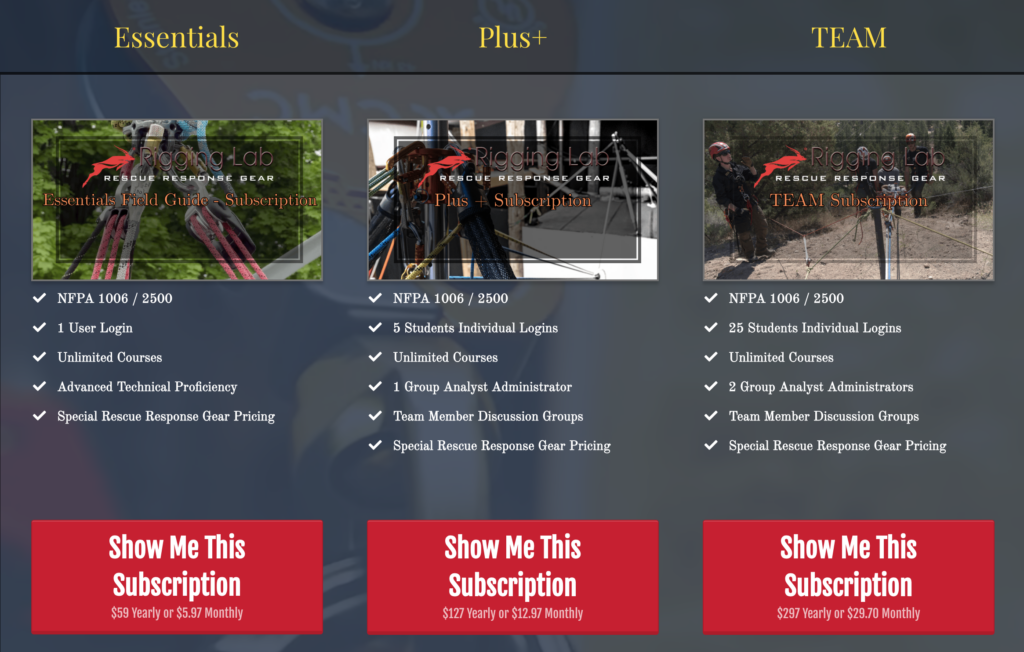Confined Space Rescue and Essential Techniques for Safety and Success
Confined space rescue is one of the most challenging and high-risk areas within technical rescue. These operations require specialized training, equipment, and safety protocols to navigate confined environments like industrial tanks, underground tunnels, and culverts. In this post, we’ll cover the essential components of confined space rescue, including entry and exit strategies, ventilation and atmospheric monitoring, and patient packaging and extraction techniques—all critical skills for ensuring safety and success.
Why Confined Space Rescue Requires Specialized Training
Confined spaces pose unique risks due to limited access, potentially hazardous atmospheres, and restricted movement. Rescuers need a thorough understanding of confined space hazards, specialized equipment, and entry/exit techniques to keep operations safe and efficient. Proper training and preparation are crucial to meet OSHA confined space rescue requirements and industry standards.
1. Confined Space Entry and Exit Strategies
A well-planned entry and exit strategy is essential in any confined space rescue, where every second counts, and the layout may have obstacles or hazards.
- Pre-Planning and Risk Assessment: Conduct a confined space assessment to identify hazards, entry points, and best practices for confined space access. Identify hazardous atmospheres, limited entry points, and alternate exits.
- Controlled Entry Procedures: Set up controlled entry points to reduce risk and maintain a clear path for rescuers and equipment.
- Backup Access Points: Establish secondary egress points, if feasible, to ensure additional emergency exits, which are critical in confined spaces with limited access.
2. Ventilation and Atmospheric Monitoring
Hazardous atmospheres are a primary concern in confined space rescues. Proper ventilation and continuous atmospheric monitoring are essential to keep rescuers and victims safe.
- Confined Space Air Quality Monitoring: Use multi-gas monitors to detect toxic gases, oxygen levels, and flammable atmospheres. Monitoring confined space atmospheres continuously is essential for safety.
- Ventilation Techniques: Apply positive or negative pressure ventilation to control air quality. Confined space ventilation systems help mitigate the risk of oxygen deficiency or toxic buildup.
- Respiratory Protection for Confined Spaces: Equip rescuers with SCBAs or supplied air respirators to provide safe breathing conditions when air quality is compromised.
3. Patient Packaging and Safe Extraction Techniques
In confined spaces, safely packaging and extracting a patient can be complex due to restricted movement and access.
- Stabilization and Securing: Use confined space rescue stretchers or litters designed for tight spaces. Immobilize the patient to prevent further injury during extraction.
- Extraction Techniques: Utilize vertical or horizontal lifts, based on the confined space dimensions, with tools like a confined space rescue tripod or high directional systems.
- Rope Systems and Mechanical Advantage: Set up mechanical advantage systems tailored for confined spaces, enabling smooth, controlled lifts and reducing the physical strain on rescuers.
4. Communication and Team Coordination
In confined space rescues, reliable communication and clear roles ensure a coordinated and safe operation.
- Team Communication: Use hard-wired or reliable two-way radios to maintain contact between inside and outside teams. Clear communication reduces confusion in confined spaces where visibility is often limited.
- Confined Space Command Structure: Assign roles such as Incident Commander, Entry Supervisor, and Rescuer to streamline operations and ensure accountability.
- Real-Time Updates: Provide real-time updates on progress, hazards, or patient condition to keep everyone on the same page and respond quickly to any changes.
5. Safety Protocols and Redundant Systems
Safety is paramount in confined space rescues, where unforeseen issues can arise at any moment. Redundant safety measures help protect both rescuers and patients.
- Standby Rescuers: Maintain a backup team outside the confined space, prepared for immediate entry if primary rescuers need assistance.
- Fall Protection: Use harnesses and belay systems to prevent rescuer falls in vertical or steep confined spaces.
- Redundant Safety Systems: Ensure secondary air supplies, lighting, and emergency extraction setups to address equipment failure or unexpected hazards.
6. Post-Rescue Procedures and Continuous Improvement
After a confined space rescue, debriefing and equipment maintenance are vital for refining skills and preparing for future incidents.
- Medical Evaluation: Assess both the patient and rescuers post-rescue for any respiratory issues or physical injuries associated with confined space conditions.
- Debriefing and Lessons Learned: Conduct a thorough debrief to discuss what went well, potential improvements, and updates to the confined space rescue plan.
- Confined Space Equipment Maintenance: Inspect all confined space rescue equipment, including air monitors, harnesses, and ventilation units, to ensure readiness for the next call.
Final Thoughts on Confined Space Rescue
Confined space rescue is inherently complex and risky, requiring extensive preparation, training, and the right tools. By mastering these essential skills and safety protocols, your team can approach confined space incidents with confidence and precision, ensuring both rescuer and patient safety.
Confined space rescues may be high-stakes, but with the right training and focus, your team can handle these challenges effectively. Rigging Lab Academy offers comprehensive training and resources tailored to confined space and technical rescues, ensuring you’re equipped with the skills needed for real-world success.
- Code of Federal Regulations – 1910.146 Permit-required confined spaces(Opens in a new browser tab)
- Confined Space Rescue Awareness | Strategies & Tactics(Opens in a new browser tab)
- Confined Space Rescue Essential Equipment and Techniques(Opens in a new browser tab)
- Welcome to Confined Space Rescue Demonstration: Awareness(Opens in a new browser tab)
- Welcome to Confined Space Rescue Demonstration: Operations(Opens in a new browser tab)
Peace on your Days
Lance










